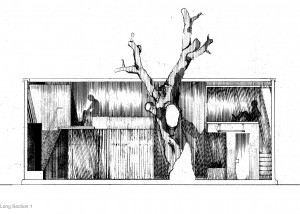In this text by Allison Smithson she has tried to make a comparison of the paintings of St. Jerome from 1400 to 1700 AD. There are three chronological situations in the paintings which which reveal different architectural explanation.
“DESERT” St. Jerome experiences pure environment, wilderness, naturalness and spirituality .He is far away from all distractions and is deep within his thoughts and is in awe of the nature but at the same time he is exposed and has no shelter and was directly under the sky.
“PURITY OF NATURE “
“STUDY” St. Jerome has access to his books, knowledge, and intelligence. He is protected from the city and has all the necessities.
“PURITY OF KNOWLEDGE “
“GROTTO” St. Jerome he has achieved both the extremes a place for his books and also a place is close to the nature.
“PURE WISDOM “
People seek the other extreme all the time, when in nature they yearn for the city and vice versa. The question we as architects have to ask is that WHY are we losing the relationship between the built environment and nature. Also according to the previous text of SOU FUJITOMOTO the relationship between nature and the built environment is questioned. He has further questioned the relationship of the spaces of the House N, the street and also the relationship with the city. Fujitomoto explains the gradation of spaces within the house and their relationship with the city and how the house adds value to the environment and the city.
My personal research topic that I would be interested would be WHY and WHEN did we lose the relationship with the nature? Also how as architects we can change this and the Different methodologies to achieve the ideal “ENCLAVE “.



